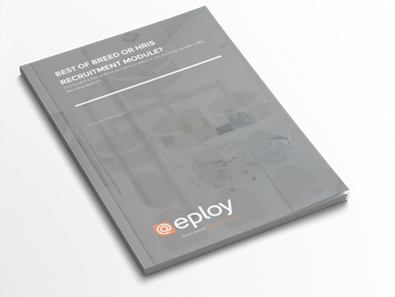Key Differences Between an ATS and HRIS
When it comes down to selecting the right technology for your organisation’s recruitment and HR management processes, there is a lot of discussion about whether you should use an applicant tracking system (ATS) or a human resource information system (HRIS). There are similarities that both systems offer, however, each technology has its own unique features and capabilities. To help businesses differentiate bwteen the two systems, we explore ATS and HRIS differences below.
HR management processes, there is a lot of discussion about whether you should use an applicant tracking system (ATS) or a human resource information system (HRIS). There are similarities that both systems offer, however, each technology has its own unique features and capabilities. To help businesses differentiate bwteen the two systems, we explore ATS and HRIS differences below.
What is an Applicant Tracking System?
An Applicant Tracking System (ATS) is a software application that handles recruitment and hiring processes. These systems are designed to cater to businesses of all sizes, be it an enterprise or a small-scale setup. An ATS is designed to help recruiters and hiring managers organise and navigate large amounts of resumes and applications and improve the recruitment process and experience for candidates. It can automate various aspects of hiring, such as posting job listings, screening resumes, ranking candidates, and scheduling interviews. The system can also track the progress of candidates through the hiring process and provide analytics about hiring practices.
What is a Human Resource Information System?
A Human Resource Information System (HRIS), also known as Human Resource Management System (HRMS), is an integrated software solution businesses use to combine multiple essential HR functions into one platform. These functions include payroll processing, benefits administration, performance analysis and review, attendance tracking, and some basic aspects of recruitment. The primary purpose of an HRIS is to simplify and automate the management of employees and HR tasks, making it easier for a company to manage its staff effectively.
What is The Difference Between an ATS and a HRIS?
An Applicant Tracking System (ATS) and a Human Resource Information System (HRIS) are valuable tools in helping business processes, but they serve distinct purposes.
valuable tools in helping business processes, but they serve distinct purposes.
This free downloadable whitepaper gives you an extensive overview of the differences.
As we covered above, an ATS is primarily used to handle a multitude of recruitment needs. It helps businesses to better manage the hiring process by automating and managing the whole recruitment process from raising a 'request to recruit' all the way to on-boarding.
collecting and sorting thousands of resumes. The system can parse through applications, screen resumes, schedule interviews, and maintain candidate databases.
On the other hand, an HRIS is designed to manage people, policies, and procedures. Its designed to manage the activity beyond hiring that include modules for payroll, benefits administration, time tracking, performance management, employee self-service, analytics, and more. Once a candidate is hired, their information is often transferred from the ATS into the HRIS, where their data is managed throughout their employment lifecycle. Some HRIS platforms have an element of basic recruitment functionality but not as rich and extensive as a dedicated Applicant Tracking System.
In summary, the main difference between an ATS and HRIS is their focus and purpose. While an ATS focuses on the recruitment and selection process, an HRIS manages employee data and HR processes after the hiring is completed. Many companies use both systems to cover the full spectrum of recruitment and HR management. If you're interested in enhancing your business operations with a dedicated best of breed ATS, get in touch with Eploy's specialists today.
Contact Eploy for Applicant Tracking Systems (ATS) Expertise
At Eploy, we offer a highly configurable Applicant Tracking System designed to help you attract, hire, and speed up the process of recruitment. Get in touch with our specialist team at Eploy to find out how we can help you meet your recruitment goals or schedule a personalised demo. No hard sell, no strings attached. Just some winning ideas to help you with your recruitment strategy.